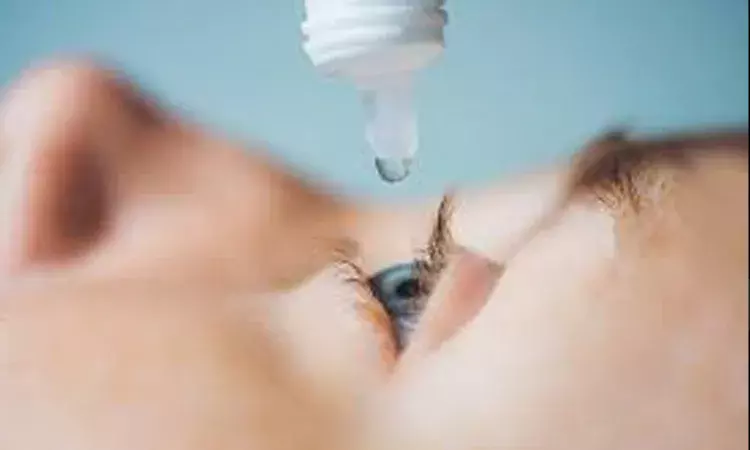- Home
- Medical news & Guidelines
- Anesthesiology
- Cardiology and CTVS
- Critical Care
- Dentistry
- Dermatology
- Diabetes and Endocrinology
- ENT
- Gastroenterology
- Medicine
- Nephrology
- Neurology
- Obstretics-Gynaecology
- Oncology
- Ophthalmology
- Orthopaedics
- Pediatrics-Neonatology
- Psychiatry
- Pulmonology
- Radiology
- Surgery
- Urology
- Laboratory Medicine
- Diet
- Nursing
- Paramedical
- Physiotherapy
- Health news
- Fact Check
- Bone Health Fact Check
- Brain Health Fact Check
- Cancer Related Fact Check
- Child Care Fact Check
- Dental and oral health fact check
- Diabetes and metabolic health fact check
- Diet and Nutrition Fact Check
- Eye and ENT Care Fact Check
- Fitness fact check
- Gut health fact check
- Heart health fact check
- Kidney health fact check
- Medical education fact check
- Men's health fact check
- Respiratory fact check
- Skin and hair care fact check
- Vaccine and Immunization fact check
- Women's health fact check
- AYUSH
- State News
- Andaman and Nicobar Islands
- Andhra Pradesh
- Arunachal Pradesh
- Assam
- Bihar
- Chandigarh
- Chattisgarh
- Dadra and Nagar Haveli
- Daman and Diu
- Delhi
- Goa
- Gujarat
- Haryana
- Himachal Pradesh
- Jammu & Kashmir
- Jharkhand
- Karnataka
- Kerala
- Ladakh
- Lakshadweep
- Madhya Pradesh
- Maharashtra
- Manipur
- Meghalaya
- Mizoram
- Nagaland
- Odisha
- Puducherry
- Punjab
- Rajasthan
- Sikkim
- Tamil Nadu
- Telangana
- Tripura
- Uttar Pradesh
- Uttrakhand
- West Bengal
- Medical Education
- Industry
Vision therapy with optical correction provides better outcome in children with amblyopia

A new article published in BMC Ophthalmology shows that in children aged 7-10 years with unilateral refractive amblyopia, vision therapy coupled with conventional treatment (part-time patching and optical correction) is more successful than conventional treatment alone.
There is a vital period for visual development, which is often thought to be the first six years of life. Children aged 7 and up respond much less well to amblyopia therapy. As a result, Yi-Ching Hsieh and colleagues carried out this study to assess the effectiveness of binocular vision treatment in amblyopic children aged 7–10 years.
In this retrospective study, 36 children with unilateral amblyopia were separated into two groups: a case group (who received vision treatment, part-time patching and optical correction of the weaker eye) and a control group receiving the same. Visual acuity (VA) was assessed at the beginning of the study, at three-month, six-month, and nine-month intervals, and three months after therapy was stopped.
The results of this study stated as follow:
The case group consisted of 19 participants, whereas the control group consisted of 17 people.
The case group's mean VA improved from 0.39 ± 0.24 logMAR at baseline to 0.10 ± 0.23 logMAR at the conclusion of therapy.
The control group's mean VA improved from 0.64 ± 0.30 logMAR at baseline to 0.52 ± 0.27 logMAR at the conclusion of therapy.
The improvement in the case group was much larger than in the control group.
All topics had follow-up exams within 6 to 12 months.
Three months after the end of vision treatment, there was no regression of VA in the case group.
Patients in the case group who underwent visual treatment improved their VA more than patients who simply got optic correction and patching.
In conclusion, in children aged 7 to 10, vision therapy coupled with optical correction and patching is a more successful treatment than optical correction and patching alone. Under the mechanism of binocular vision and perceptual learning, the treatment not only leads to better vision gain but also to a shorter length of treatment. Vision therapy coupled with conventional treatment is less effective in people with anisometropia higher than 10.0 D.
Reference:
Hsieh, Y.-C., Liao, W.-L., Tsai, Y.-Y., & Lin, H.-J. (2022). Efficacy of vision therapy for unilateral refractive amblyopia in children aged 7–10 years. In BMC Ophthalmology (Vol. 22, Issue 1). Springer Science and Business Media LLC. https://doi.org/10.1186/s12886-022-02246-9
Medical Dialogues consists of a team of passionate medical/scientific writers, led by doctors and healthcare researchers. Our team efforts to bring you updated and timely news about the important happenings of the medical and healthcare sector. Our editorial team can be reached at editorial@medicaldialogues.in.
Dr Kamal Kant Kohli-MBBS, DTCD- a chest specialist with more than 30 years of practice and a flair for writing clinical articles, Dr Kamal Kant Kohli joined Medical Dialogues as a Chief Editor of Medical News. Besides writing articles, as an editor, he proofreads and verifies all the medical content published on Medical Dialogues including those coming from journals, studies,medical conferences,guidelines etc. Email: drkohli@medicaldialogues.in. Contact no. 011-43720751


